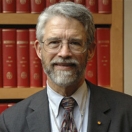
[Ed. Note: This is the first in a series of blogs entitled "Ask the President's Science Advisor." In this first week of a new foray in public engagement, Dr. Holdren chose a tweet from @BjFreeman24 about challenges with the way universities are structured and if that is negatively affecting science and innovation. To have your question considered for this feature, you can e-mail your short query to AskDrH@ostp.gov or tweet @whitehouseostp using the hashtag #AskDrH. The question selected will be posted in the blog above Dr. Holdren's answer.]
BjFreeman24: @whitehouseostp #AskDrH The university structure is killing science. Ego and bureaucracy override diverse, original ideas. What can be done?
While I don’t agree that the “university structure is killing science,” I do believe that federal research agencies and universities should always be looking for new ways to support diverse, original ideas. As part of his national innovation strategy, President Obama has asked federal agencies to increase their support for multidisciplinary research, early investigators, and high-risk, high-return research. For example, the National Institutes of Health (NIH) Pioneer and New Innovator awards provide support for creative researchers with ideas for projects that have the potential for unusually high impact.
The NIH and National Science Foundation have recently released a joint solicitation encouraging proposals at the intersection of biology and the physical sciences and engineering, in areas such as biological computing and biologically-inspired materials. Universities are also taking some important steps by allocating new faculty positions and lab space to support multidisciplinary research themes. OSTP welcomes suggestions for additional steps that the federal government should be taking to foster creativity and high-impact research.
John P. Holdren is Assistant to the President for Science and Technology and Director of the White House Office of Science and Technology Policy


